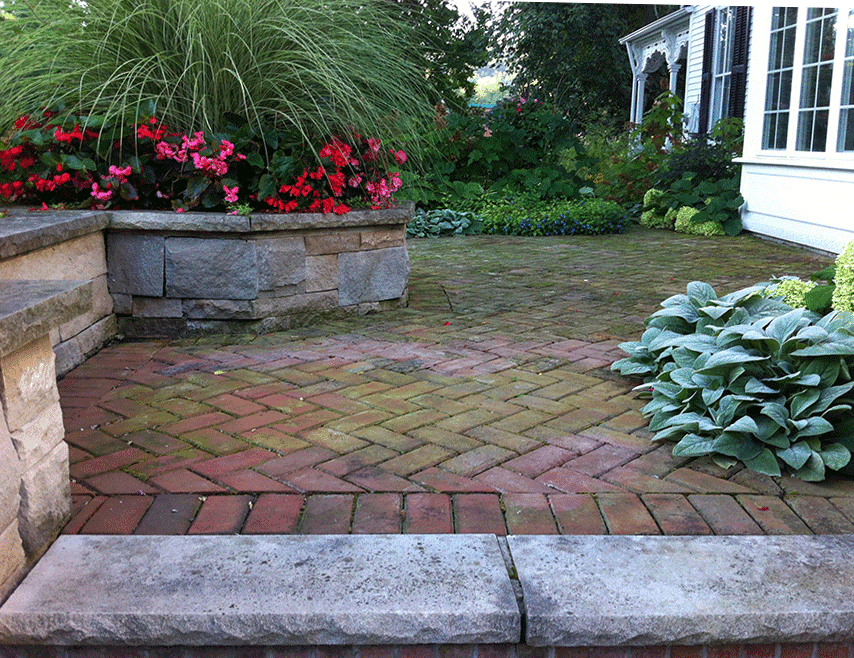
There’s more than one way to lay down bricks or concrete pavers to make a path or patio. Some configurations are easy to DIY; others more labour-intensive, because cutting may be required. For your garden design, here’s a rundown of five patterns to consider before you get ready to lay down those pavers.

Running bond
One of the most classic, common patterns is the running or stretcher bond, probably because it requires almost zero cutting of bricks—just at the two ends of a path. Bricks are laid end to end and the joints fall in the middle of the bricks on either side of them. It’s also one of the easier patterns to use if there will be a curved edge on your path or patio.
Cross bond
Similar to running bond; however, bricks run at a 90-degree angle to the long edge of a path. Bricks need to be cut in every other row. Both running and cross bond are also known as stretcher bond.
Stack bond
Sometimes called “Jack on Jack,” this simple pattern features strong visual lines and works well in contemporary designs. Bricks are lined up, or stacked, in even rows and columns. Stacked bond is also good for curved edges, but it has the weakest bond of the patterns listed here. More decorative than practical.
Basketweave
Especially suited to patios or other large areas with primarily foot traffic, because it has a weak bond, too. Bricks are set in alternating right-angle pairs. No cutting is required. Use bricks or pavers twice as long as they are wide.

Herringbone
Bricks are laid either at a 45- or 90-degree angle to the perpendicular. It’s considered to be one of the sturdiest patterns, because it offers the most interlocking junctions. Cutting is required at the edges. Use bricks twice as long as they are wide.

Does anyone know of any software that can help design the layout of patio paving?
I want to replace my patio using different colours and sized paving stones in a random effect.
I’d like a design tool that creates suggested patterns so I can order the correct quantities of paving stones with the least cutting.
This article would benefit greatly with visual examples. Some of us have difficulty visualizing from a written description
We’ve added some visual examples of paving patterns.